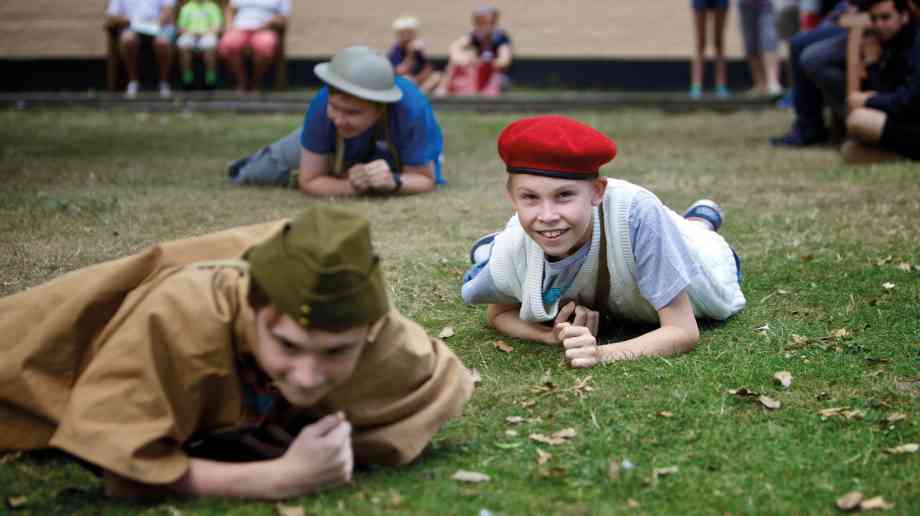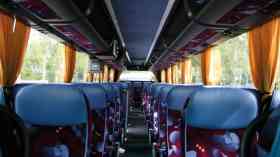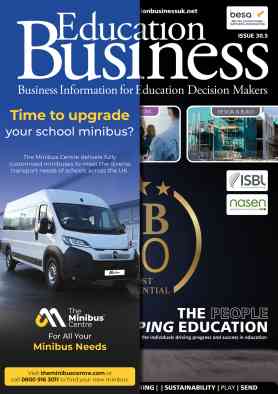
Walking in the footsteps of Codebreakers
Back in World War Two the Codebreakers were given only rudimentary inductions into the art of cracking the enemy’s messages. But visiting pupils are lucky because they are introduced to the technique in specially designed workshops; Pattern Play to Codes and Ciphers, Bletchley Park has an activity session to suit every child and teenager.
The sell-out learning programme caters for up to 180 students each school day. It uses the museum’s clear connections to history, maths, science, design and technology, and computing to link to subjects across the curriculum. There is a focus on the STEM subjects (science, technology, engineering and mathematics) and giving pupils the knowledge that will enable them to use these subjects in the 21st century workforce. Just as some of the Codebreakers went on to develop important post-war technology, these skills will give students the opportunity to shine in their future careers – and perhaps to create their own groundbreaking inventions.
Kate Travers, Head of Education at Bletchley Park, said: “Our learning programme is extremely popular with visits from up to 180 students each day during term time. The programme is so much in demand from schools that we have a higher number of requests for booking educational visits than we can currently accommodate and so advise educators to book their visit several months in advance to secure a place.
“A dedicated learning team carefully plan and deliver activities to provide the best possible learning experiences to inspire young people. Learning sessions cover a range of different subjects across the curriculum including history, coding and online safety for early years learners through to students in higher education. Activities are tailor-made for a specific audience and all are designed to be adapted appropriately for students of differing abilities.”
A choice of sessions
Teachers can select from a range of different workshops for their visit. Pattern Play is a workshop aimed at the youngest visitors. Five to seven year olds are invited to explore the connections between shapes, patterns and the stories of Bletchley Park. Just as patterns are an essential foundation to mathematical knowledge, they were also a basic building block for codebreaking. Staff had to check for any potential patterns in the enciphered messages, which might be the key to cracking the day’s code.
The Codes and Ciphers session focuses on communications techniques that have been used by British officials for centuries, albeit in various guises. Back in the fourteenth century King Edward II ordered that people entering England be scrutinised for suspicious letters and in Tudor times Queen Elizabeth I’s chief spy, Francis Walsingham, had a deciphering department in London. Codebreaking became a large scale and highly organised event during WW2.
The Codes and Ciphers workshop introduces students to a variety of coding techniques that have been used throughout history and then allows them to try their hand at making their own devices for sending coded messages. Older children will be introduced to a real Enigma machine and shown how its design was intended to keep the enemy’s messages secure from prying eyes.
How well can you keep a secret? Careless Talk Costs Lives explores the everyday lives of Bletchley Park’s Codebreakers, central to which was the necessity to keep quiet about their work, often lying to their closest friends and relatives. After all, the people of Britain were warned not to help the enemy because ‘careless talk’ may give away vital secrets. Cyber Secrets brings privacy right into the modern day. The session uses interactive games and activities to demonstrate how the lessons learned from Bletchley Park’s Codebreakers can be applied to staying safe online.
Newly introduced workshop, Interception to Intelligence: Land and Sea puts students right into the middle of a codebreaking scenario. Suitable for ages nine and up, this session gives participants the opportunity to take part in a simulated intelligence operation set in 1941. This is a real chance for pupils to test their logic and codebreaking skills; thinking strategically to help secure Britain’s success in the Battle of the Atlantic.
Open to all
Bletchley Park wants to encourage pupils from all backgrounds to visit and enhance their learning and for this reason a new bursary scheme was launched in February 2015. Funded by Winton Capital Management, the scheme opens up the museum to schools which would otherwise be unable to afford to visit. Each bursary covers the cost of coaches, entrance fees and a learning session for up to 32 pupils and eight adults. Schools’ eligibility for a bursary will be decided based on the number of pupils who are eligible for free school meals or pupil premium.
Discussing the bursary scheme, Kate said: “During World War Two Bletchley Park had a diverse workforce, particularly as the war progressed. Financial standing wasn’t a barrier to working here then and it shouldn’t be a barrier for children to visit now.
That’s why we decided to start running a bursary scheme, which will mean that schools with high levels of children whose parents cannot afford to contribute can visit for free.”
As well as taking part in a special learning session, visitors from schools can also take advantage of the heritage attraction’s other visitor experiences. Block C, now the Visitor Centre, features an immersive introductory exhibition, Secrets Revealed, which gives an overview of life and work at Bletchley Park, starting from the moment the Codebreakers would have stepped off the train at Bletchley Station. Huts 3 and 6 have been set dressed to show the conditions in which the Codebreakers would have worked, and Hut 8 has superb interactive material demonstrating how the codebreaking functioned, including some fantastic explanations of probability. After all, there were 159 million million million possible settings for each day’s codes so it was near impossible that the correct settings would be found by chance. Hut 8 also houses Alan Turing’s office, which has been recreated in its original location, complete with a mug chained to the radiator, as Turing did to prevent its theft.
The iconic Victorian Mansion features a beautiful ballroom, a library set dressed to January 1940 and the office of Alastair Denniston, Head of the Government Code and Cypher School until 1942. The Drawing Room now features a new exhibition, Gordon Welchman: Architect of Ultra Intelligence. This focuses on the life and work of the head of Hut 6. These are just some of the highlights at the museum.
Visiting schools will be given a special guided tour around the grounds, led by one of our dedicated learning volunteers. The tour takes in the exteriors of the main buildings and focuses on key historical information, leaving pupils with a clear overview of the work at Bletchley Park. Sometimes it can be easier for the learning team to bring Bletchley Park to the school for a specific session that fits in particularly well with the term’s planning. For this reason the heritage attraction also runs an outreach programme with two distinct, exciting and engaging opportunities.
In the Enigma Outreach session the outreach officer brings a real Enigma machine to the school. Visits are built around the demonstration of this iconic piece of WW2 history, and can also include presentations on the history of Bletchley Park, interactive talks on codes and ciphers, and hands-on codebreaking workshops.
Stay safe online
Bletchley Park also offers an Online Safety Outreach session. Run in partnership with Intel Security, the Online Safety Programme is designed to encourage people of all ages to think about their safety in the online environment. The workshops cover cyber security, cyber safety and cyber ethics. These all help the digital generation to stay safe as they negotiate this 21st Century hazard. This includes the personal data which pupils upload to the internet and how this can be used to make them the target of security threats. It also covers social networking and how to manage online relationships.
Additionally, pupils are taught about cyber-bullying and digital responsibility. There is an emphasis on encouraging discussion and getting students to consider different aspects of online security.
The depth of discussions depends on the age group, ranging from the dangers of sharing your address online to the necessity of ensuring online shops have a symbol indicating that they encrypt your data.
The learning team also run sessions for families visiting Bletchley Park. The Family Maths workshops are drop-in events for five to 12 year olds and their parents. These are great opportunities for adults to learn how to support their children’s mathematical learning whilst having fun.
Further Information
www.bletchleypark.org.uk/edu
Latest News
30/10/2025 - 01:28
In the wake of the Raac crisis, the DfE spent £5 million on research into the condition of school buildings, which is due to conclude in spring 2026.
30/10/2025 - 01:09
Malmesbury Primary School in Wiltshire has submitted plans for a major expansion, funded by entrepreneur James Dyson.
30/10/2025 - 00:55
Monday's Every Pair Tells a Story campaign to protest to highlight the national crisis in SEND provision.
29/10/2025 - 09:19
Estimated data from the Department for Education reveals that 470,000 pupils under 16s use local authority funded transport to get to school.
28/10/2025 - 09:29
Timeline set for removal of Reinforced Autoclaved Aerated Concrete







